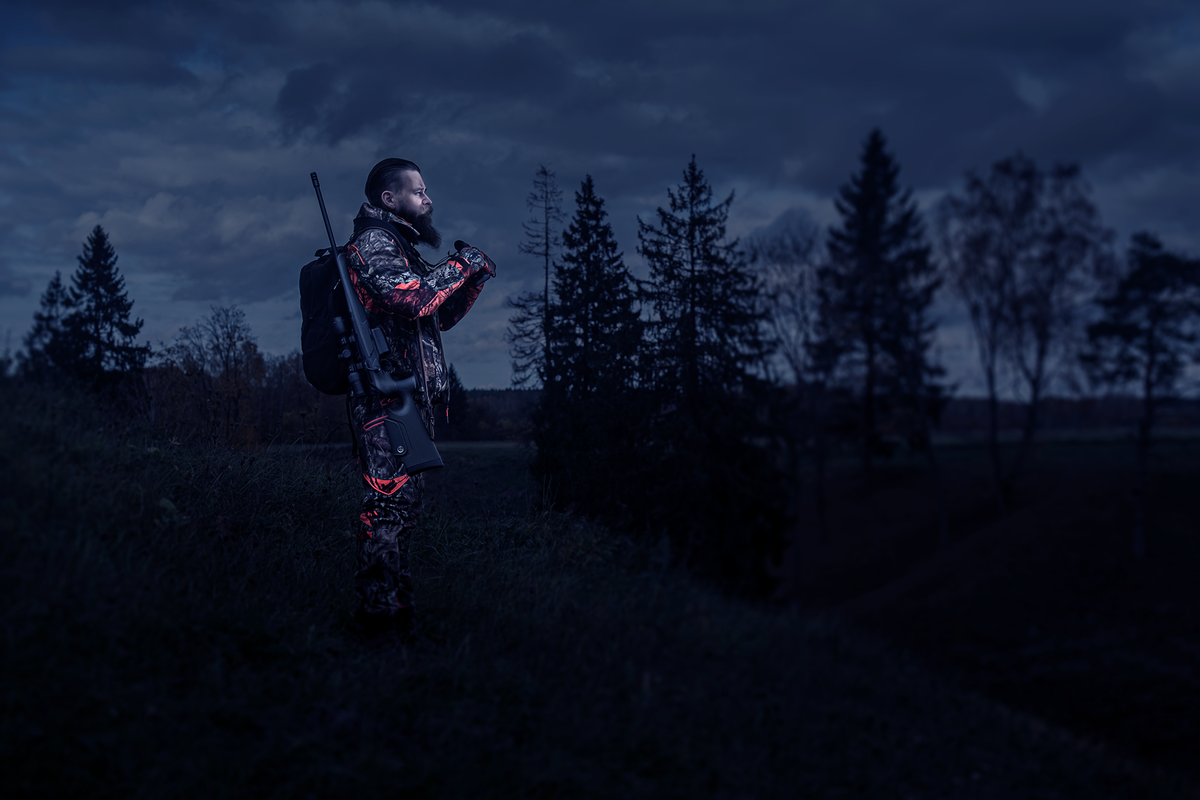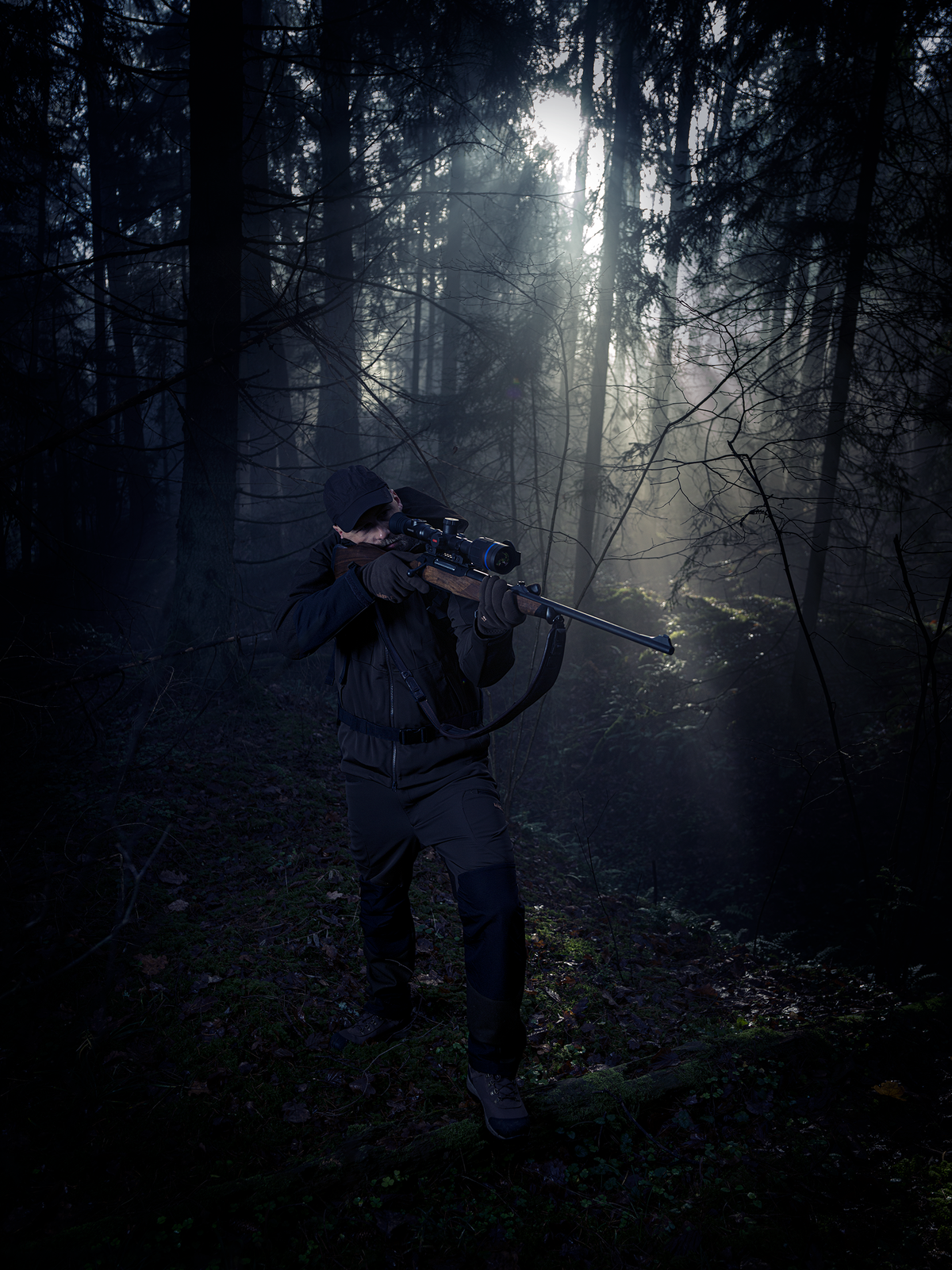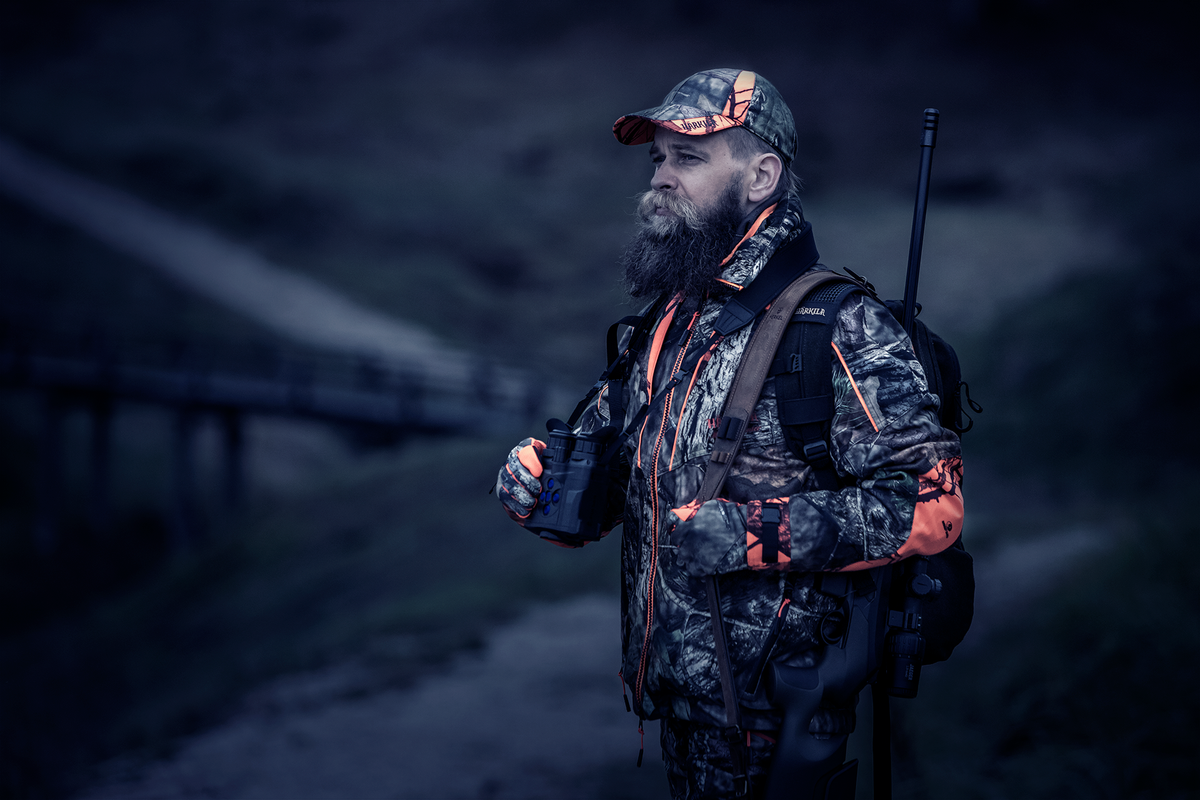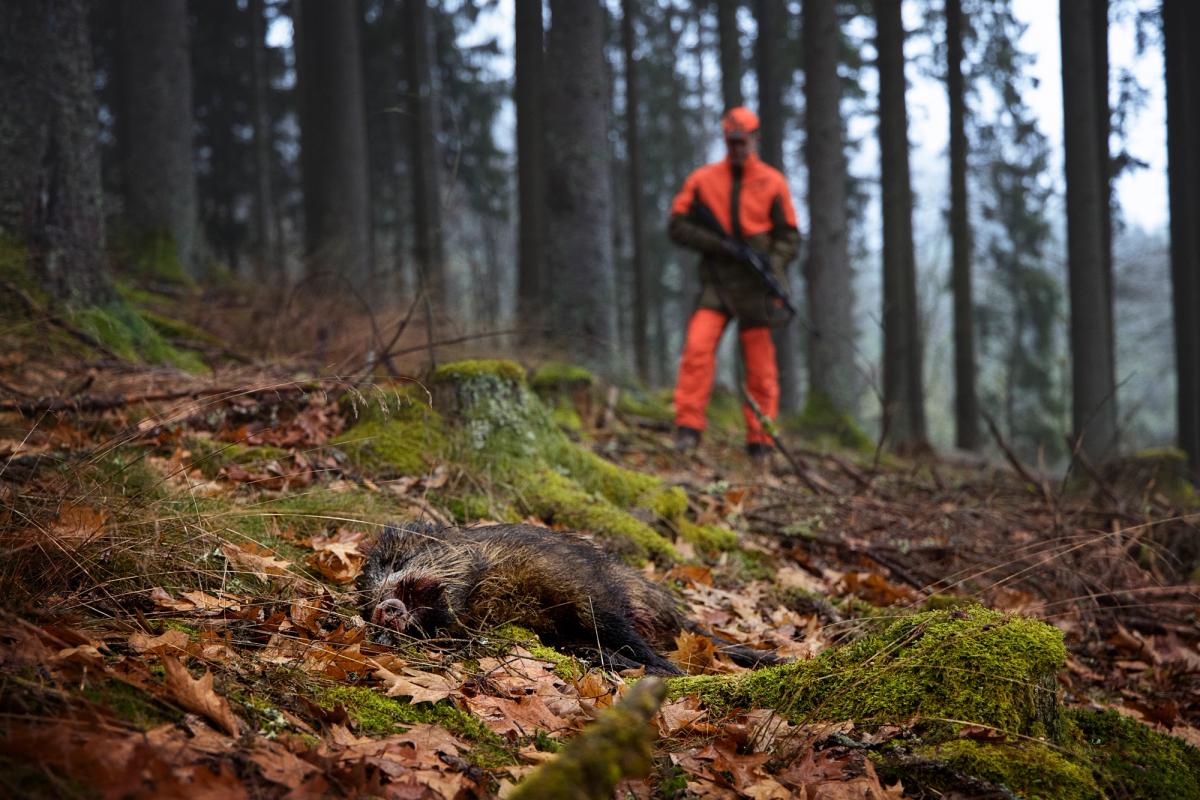Stalking
Stalking wild boar at night demands more of you
The wild boar hunting season is very long and offers an enormous variety of methods. Those who want to stay active stalk the game. The wild boars are most active at night and this type of hunting requires knowledge, good preparation, and extreme caution.
For many of us, hunting wild boar is one of the most attractive forms of pursuing our passion. In fact, I know those who limit themselves to this species only. They are not interested in wing shooting; they do not care much for fur or antlers. They don't get the thrill when the red deer rut begins, and roars of mighty stags shake the forest. Their only hunting purpose is to get the black game, as we used to call it.
The hunting season is probably the longest of them all (in many countries you can actually hunt wild boar all year round), which combined with relatively liberal regulations in many areas (hunting at night, using thermal imaging and night vision, silencers, baiting etc.) allows the hunter to use a wide variety of hunting methods.
Most of these hunting methods are relatively passive and rely heavily on waiting and patience. That is why many people prefer stalking which allows you to stay active during the hunt, to reach the game instead of waiting for it to come to you.
Since wild boar are the most active at night, such an approach usually takes place in the dark. That requires knowledge, proper preparation, and extreme caution.


“Obey the rules and hunting traditions. Though often unwritten, they have been created for a reason. Only then the hunting can be safe, and you can experience the joy of unique competition with nature in the surrounding darkness.”
Time and location
It all depends on local conditions. Usually, wild boars usually leave their day hiding places in the evenings, go out for a meal, and return in the morning to hide. It happens, however, that their activity changes, because, for example, the crops in the fields are dense and tall, so there is no need to seek shelter in the forest.
It is even possible to meet wild boars during the day. Some hunters, when the time is right, try to get closer to resting or foraging animals in the corn rows. When it is hot, wild boars also like to visit their bathing areas – puddles with mud to cool off. It is also a place worth visiting.
However, as a rule – a typical approach takes place at night, when wild boars appear to feast. It might happen in the evening, but often only in the middle of the night. Good hunting depends to a great extent on the reconnaissance of the area.
It is very easy to recognize promising hunting spots during the day. Boars burrow in the ground, leaving soil turned upside down. The humidity and the colour of the soil make it possible to judge whether it is a place of constant visits or just a random pass. The footprints can also be used to assess the size and abundance of wild boars.
The strategy
Once you know where to expect wild boar, you need to choose the right strategy. First, whether to confine yourself to one place (field or a meadow) or to hunt over a larger area. Secondly, should you wait for the wild boars to come or should you appear when they are already feeding?
Personally, I like to start hunting by waiting on a high seat or other favourable observation spot. This allows me to have a good view over the area and to spot wild boars should they come out of a different direction that night. I choose the stalking route when they started feeding calmly.
The second popular approach is walking from one potential spot to another. This has its advantages – sometimes you cannot see part of the fields from a high seat, the maize is only partially mowed, the terrain is hilly, etc. that the game is already feeding.
Wind is key
Wild boars have good hearing and an even better sense of smell. Therefore, the decisive factor in the chosen approach route must be the wind. Its direction should be constantly checked – for example, using a lighter, the flame of which is perfectly visible in the dark. Any attempt to approach downwind must fail.
Unlike the wind, it's good to have moonlight behind your back. This will avoid the appearance of side light and reflections in the rifle scope and will also allow you to see the target in the most contrasting way possible.
Not all wild boars are equally careful. The easiest to approach are loud and very active groups of young animals, the hardest are sows with young and old boars who have seen everything and know all the tricks. The latter, moreover, will very rarely appear in a place convenient for a hunter – they will stay close to their hiding places and almost never in the moonlight. Therefore, it is even more necessary to be cautious and quiet, and to approach the wind very slowly, without haste and sudden movements.


The gear
The key during any hunting, but night hunting in particular, is good image recognition. This cannot be stressed enough. I have heard of so many tragic cases, because the hunter took a potato thief for a boar, a drunkard who mistook the roads and wandered around the field on his knees or even a fellow hunter who appeared unexpectedly. The object must be clear and recognizable!
That is why the most important element of the equipment is good and bright binoculars, preferably one of the 8x56 classics. Recently, of course, a wonderful tool are thermal imaging cameras that allow you not only to recognize an object, but also to see it from a distance, even when there is not enough light and contrast.
The second most important thing is the rifle scope. Thanks to it, after recognizing the game, an ethical and effective shot will be possible. And this one is, for obvious reasons, much more difficult than during a day. Therefore, it is impossible to underestimate the importance of the appropriate caliber. It doesn't have to be fast, you rarely shoot far, but it's worth thinking about bigger bore and good ammunition.
The third most important thing is a shooting rest. When hunting from the ground in the middle of a field or meadow, you cannot count on the support provided by a high seat or a tree. A free-hand shot is very difficult, and I advise against it. Good shooting sticks are indispensable. In addition, I recommend a rangefinder – in an empty field it is very difficult to assess the distance and then find the place where the boar was.
Obviously, a good flashlight is necessary. At night, it is very easy to get confused – as a hunter, you can be blinded by the flash from the barrel and the recoil of the weapon. Then it is easy not to notice that the boar hit ran in a different direction than the rest of the group (this happens very often). Hunting at night requires even more careful checking of the effect of a shot than any other. That is why if you don’t own a tracking dog, have at least the phone number for the blood tracker, just in case.
The clothes
Of course, clothing plays a great role. It's not only about freedom of movement, but also about maintaining thermal comfort. You do not want to overheat while moving and not get cold when you stop either.
You don’t walk constantly during stalking. Sometimes you must wait for the game to move, or to appear at all. It is easy to get really cold during the breaks, especially in Autumn and Winter. Your clothes must therefore be warm enough, but also breathe well – when you start to move.
Secondly, your clothes must be quiet. When approaching, depending on the conditions, you have to get 50 meters close to the wild boar, or even closer. Any swish or rustle can then reveal your presence. Equally, if not even more, important is isolating body odour. Of course, when the wind is favourable, you are covered, but one unfavourable blow in the opposite direction means the game is over.
Lastly, it is worth considering a camouflage, even if visibility is limited also to the boars. The main task of using camo is to weaken the outline of the figure, which is most apparent at night. Of course, the brightness must be adjusted to the conditions – it is difficult to imagine an effective approach on stubble, and even more so on snow, in dark clothes.

Safety
Finally, I have to say it again: safety first! Hunting at night is difficult and carries even greater risks than usual. You must be even more careful and be able to predict the consequences of your actions.
Hunting from the ground involves a shot parallel to the ground and this increases a risk of ricochets (personally, I never shoot from the knee or a prone position because of this). Therefore, you always must be sure that there is a good bullet trap behind the target. This is another reason to visit a hunting site and get to know it well during the day.
When hunting with company, it is essential to maintain contact and knowledge of who is where. My friend has a habit of turning on a tiny red LED on his hat – it does not scare the game but allows others to see him from a distance.
Most of all – obey the rules and hunting traditions. Though often unwritten, they have been created for a reason. Only then the hunting can be safe, and you can experience the joy of unique competition with nature in the surrounding darkness.
// Written in coporation with Lukasz Dzierzanowski, who is an author, hunter, blood tracker and gun enthusiast from Poland. When not hunting, he teaches Computer Engineering at a technical university in his hometown of Opole. Photos by Pulsar and Härkila //